
to the Calypso Community!
If you are looking for a unique way to spice up an event, host a workshop, or participate in a hands-on creative musical experience, you have come to the right place. We encourage you to look through our offerings, and then contact us so that we can work together to design a Calypso program that will meet your needs.
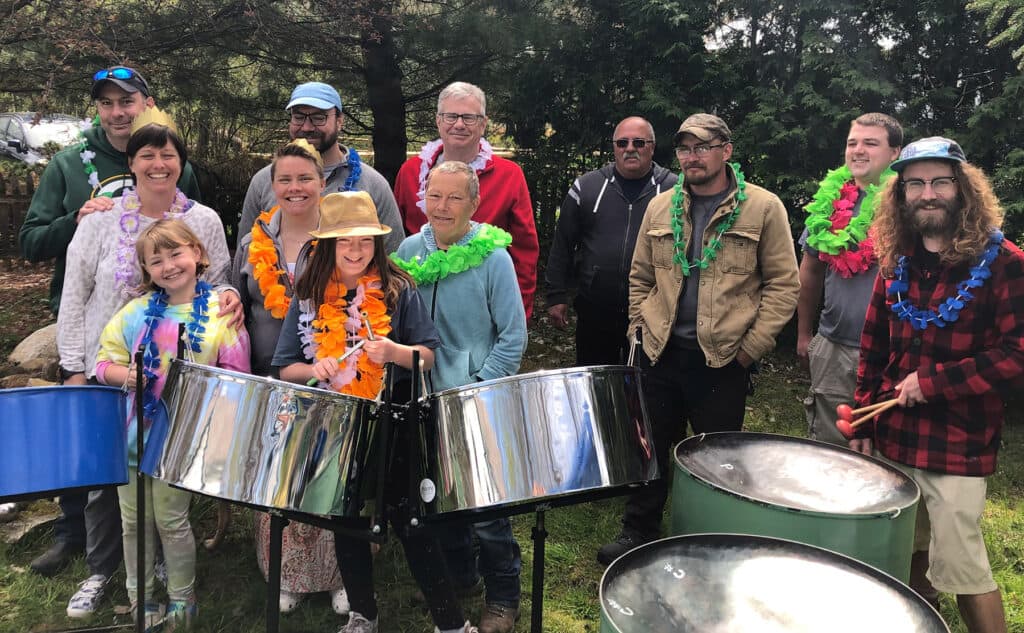
Backstory
“I believe that music has a wonderful and unique way of building community. It is my goal, through Calypso workshops, to provide ways for people of all ages to experience the joy of making music together.
We can look to the past to see the central role music played in everyday life. People sang as they worked, played, celebrated, grieved, or simply passed the time. The rhythms, words and melodies of folk songs were woven into the daily fabric of existence from the moment of birth and onward, throughout life’s journey.
Today we can access any arrangement of any song ever recorded with a touch of a button. Amazing! However, the act of making music spontaneously, feeling the camaraderie and shared purpose of creating in the moment, has largely been forgotten. In other words, music may be more prevalent than ever, but it is also more passive.
Whether you are part of a work team, classroom, family, retirement community, or any other group, you will benefit from making music together. Music speaks to all of our intelligences, and makes us feel good. My 30+ years of experience performing and teaching music inform all decisions as I continue to develop and lead Calypso workshops.”

Jennifer Cohen, Founder
Jen, a classically trained pianist, started playing pan in 2006. She has performed with Andy Narell and the Laborie Pan Project in St. Lucia; the New England Panfest; and at the 2023 Brooklyn Panorama competition as a member of the steel orchestra, Steel Sensation.
She directs the Panhandlers, a 12-person community steel band that performs regularly around Vermont and New Hampshire. She also performs as a soloist. Hundreds of people have been introduced to the joy of steel pan through Jen’s workshops, camps, lectures, and lessons.
“Playing steel drums was great fun, and it was so great for us to connect in a different and meaningful way. Thanks for making our retreat special.”
Cheryl ScarzelloDIRECTOR OF FINANCE, ADDISON RUTLAND SUPERVISORY UNION “Calypso Steel Drumming is a benefit, and I think when we offer a few of these unique benefits, that people appreciate that and then they go back to work in an environment that they feel good about.”
Gina KelleyDIRECTOR OF HUMAN PERFORMANCE, VELCO “Thanks for all your hard work with us, Jennifer. I really appreciate your patience, your enthusiasm, your skillful direction, and your sense of humor.”
Susan McCoyHEALTHCARE PROVIDER “We love it; it’s so cool' is how students reacted to Jen’s steel drum classes. Kids are still talking about it, several months later. The residency was popular, kept the students engaged, and worth every penny."
Carol BakerFINE ARTS DIRECTOR, RUTLAND CITY SCHOOLS Previous
Next
Workshops
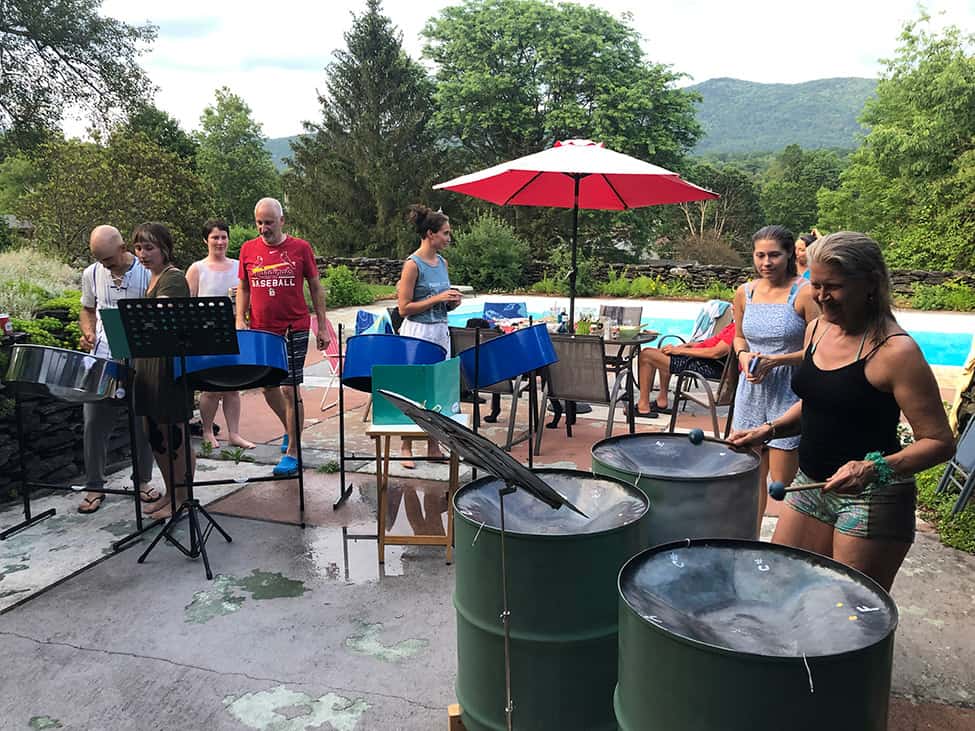
Steel Band Pop-up
** Signature Workshop **
Our most popular workshop is ideal if you are looking for a: Team Building Event + Breakout Session + Retreat + Wellness activity + Conference Opener + Personal Development Session + Lecture/Demonstration
A Steel Band Pop-up takes an hour. A group of 7-10 people will be introduced to an array of steel pans, and proceed to learn a tune in full harmony. The workshop is fun, fast paced, and never disappoints. Participants are amazed at how well they do. No musical experience is necessary to be successful. This workshop can be modified in length and structure, to fit your specific needs and time frame.
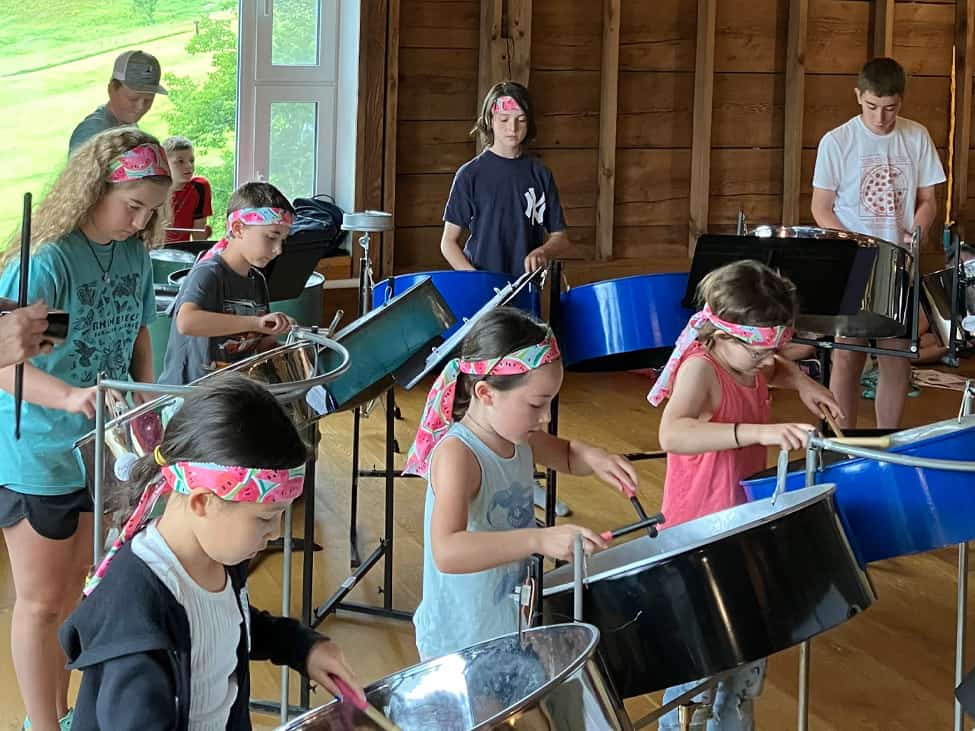
Play Pan!
School Residency Program
Bringing pan into your school provides an opportunity for students to have fun, make music together, and learn about Caribbean culture. Oftentimes it is the extracurricular activities that: Spark Curiosity + Expand Social Awareness + Inspire Genuine Learning + Encourage Risk-Taking
Playing steel pan together builds community, allows students to feel a sense of shared purpose, and promotes a safe environment for all learners to grow. Best of all, steel pan is easy and fun to play. Students take great pride in sharing what they have learned with teachers, parents, and the whole school community at the end of the residency. Pan residencies generally last one or two weeks.
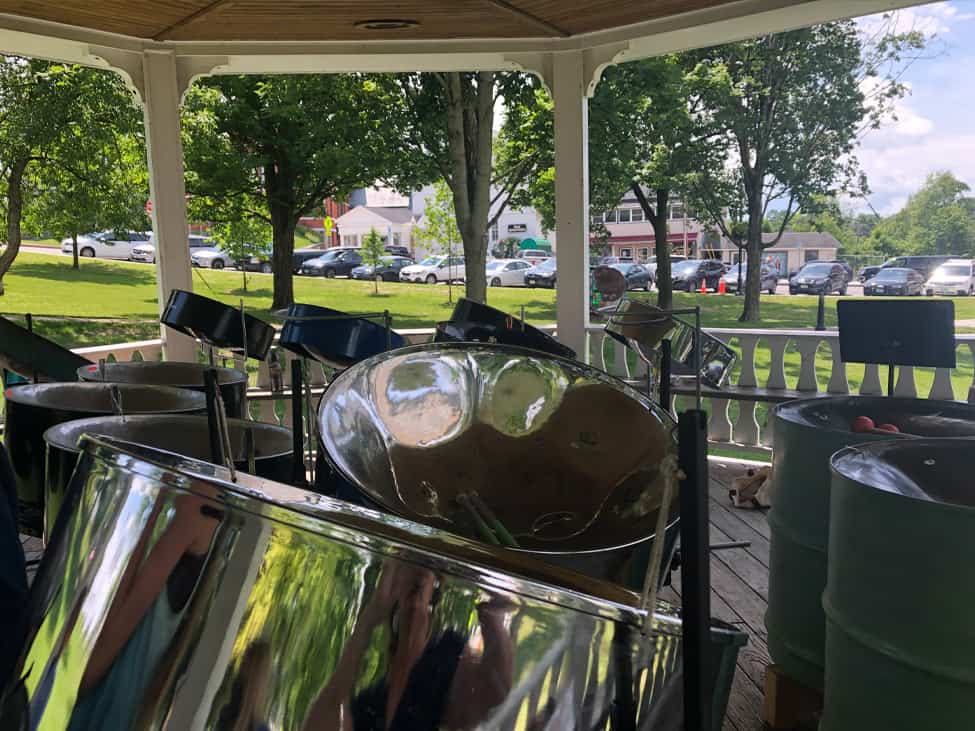
Pan: Symbol of Resiliency
This program is a lecture/demonstration, in which audiences learn about the fascinating history of the steel pan, and its importance in the history of the Trinidadian people. It is perfect for retirement communities, libraries, and other educational series.

Always Upbeat
Fun for any age, and designed for a large group, Always Upbeat uses pitched tubes. Participants play familiar folk tunes together, as they watch a video that tells them when to play. It is harder than it looks, and there is generally a lot of laughter during an Always Upbeat session, which is ideal as a 20-minute conference opener.
Book a Performance
If you would like to book the sounds of steel for a concert, wedding or other private event, we have two options.
The Panhandlers have been performing around Vermont and New Hampshire for over 20 years. This 12-person steel band plays a mix of Caribbean tunes, pop songs and jazz standards. Our music is guaranteed to get audiences moving with our toe-tapping rhythms and upbeat arrangements. We are known for playing at the Prouty fundraising event each year, and we usually take on around a dozen other gigs each season, including outdoor concert series, Caribbean themed events, parades, etc.
For a more intimate setting, consider a Calypso combo. This can be 2 to 4 players, and we can customize the play list to suit your tastes. Perfect for receptions, weddings, restaurants, and private parties.
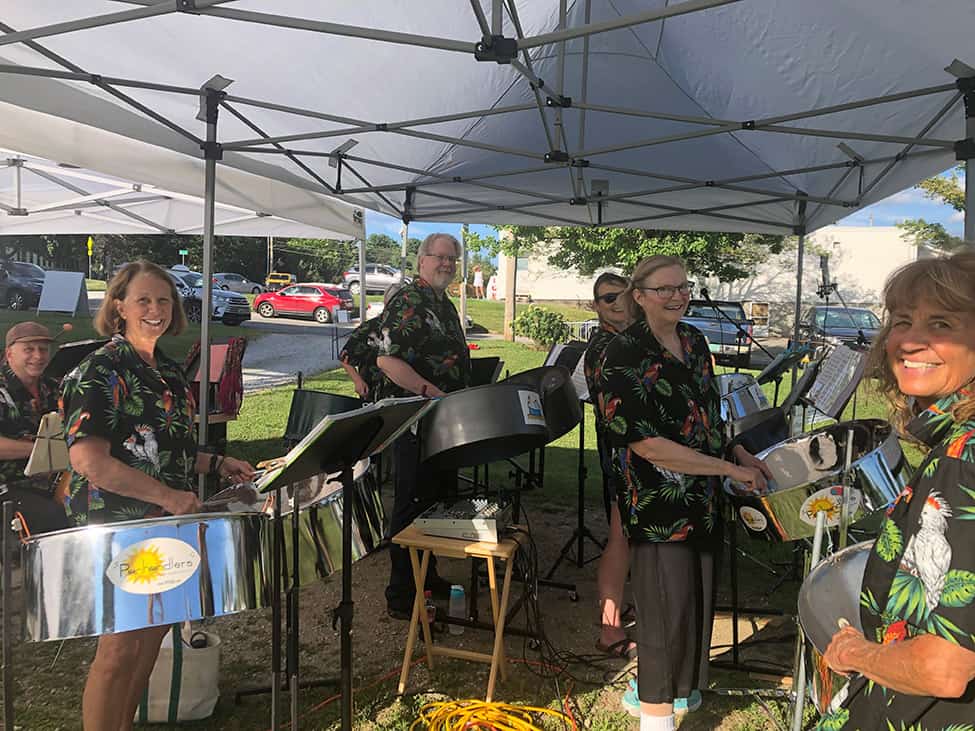

©2023 Calypso Connections
Vermont Web Design by: JEG DESIGN INC
CONTACT
802.558.4323
E-MAIL
ADDRESS
3 PIEDMONT DRIVE
RUTLAND, VT 05701
